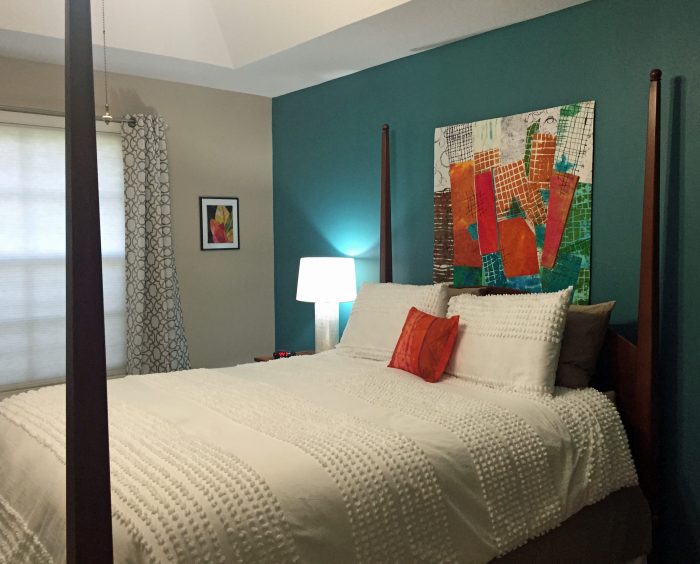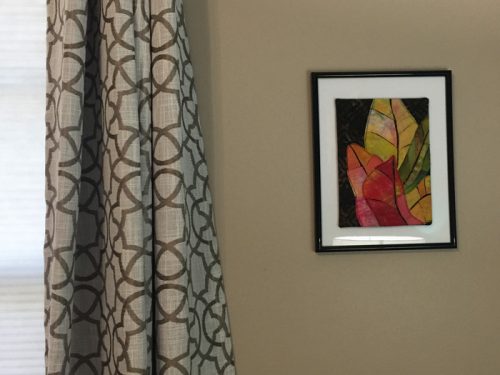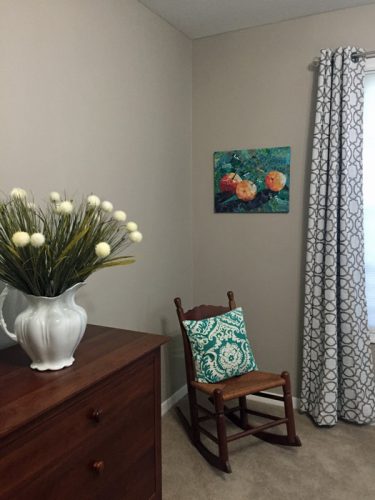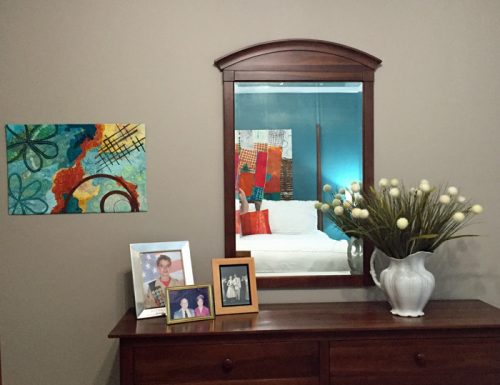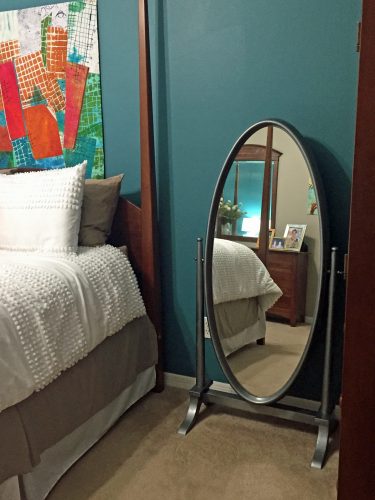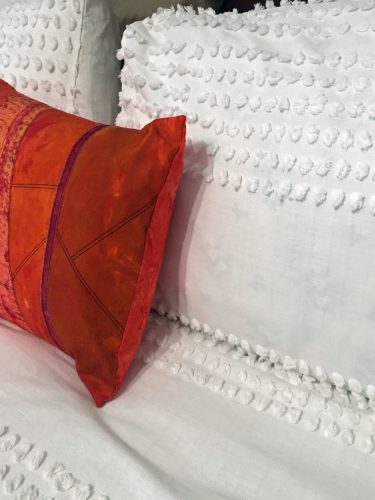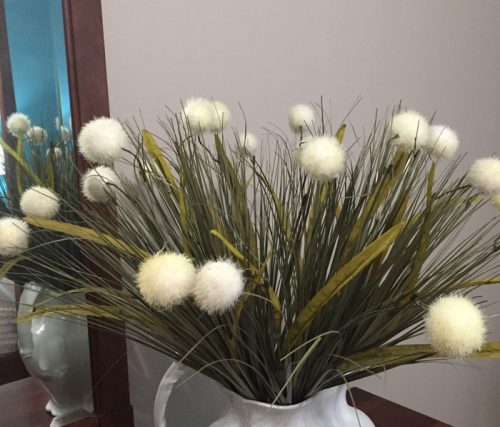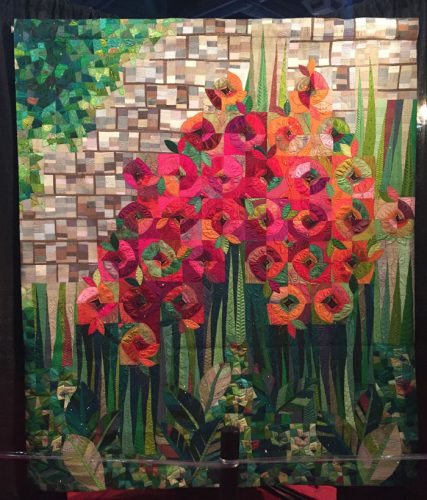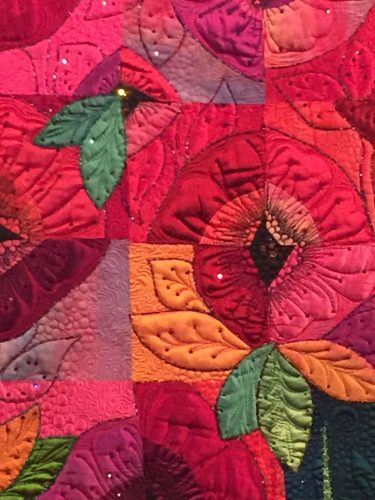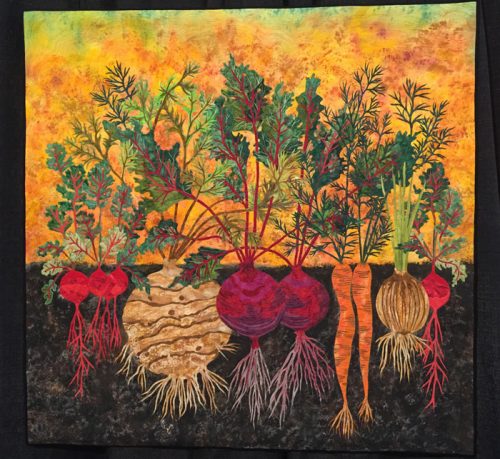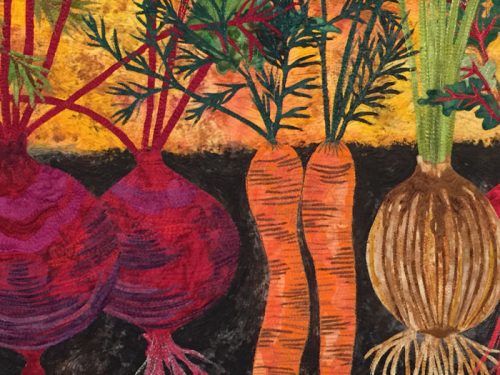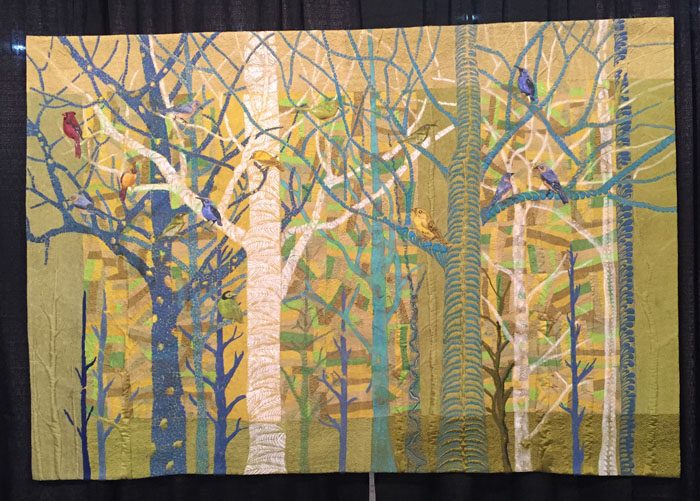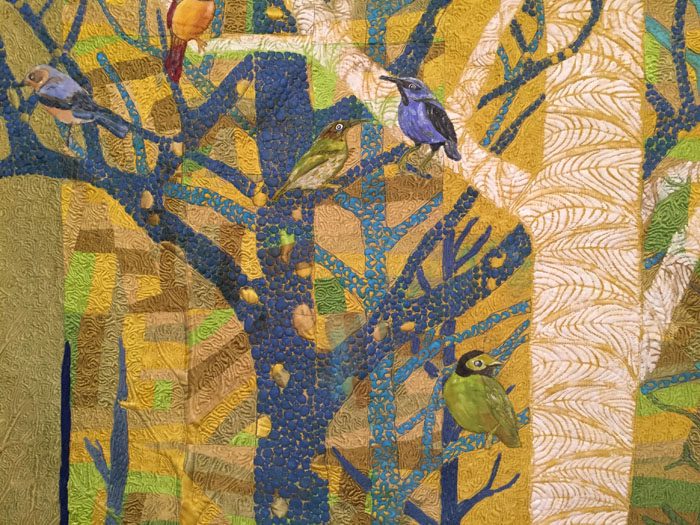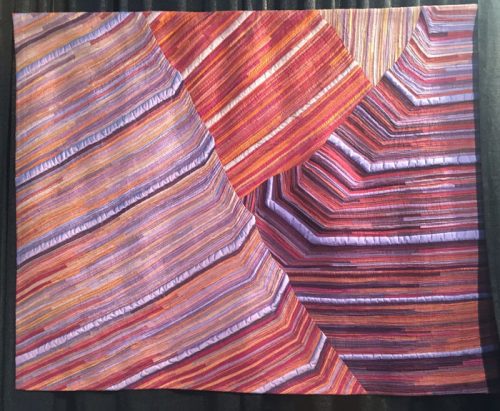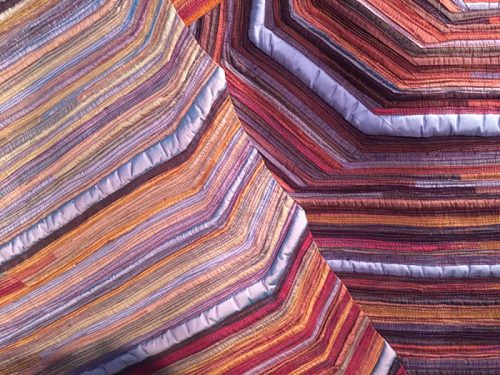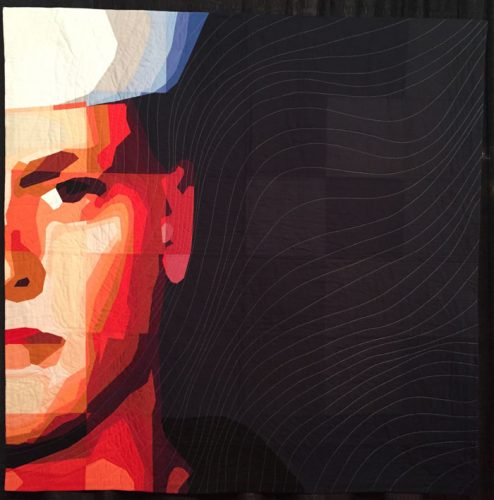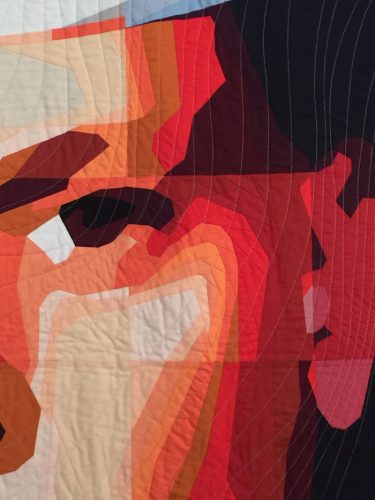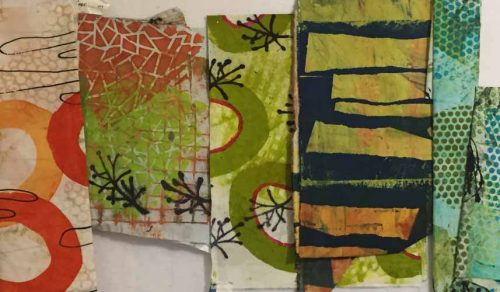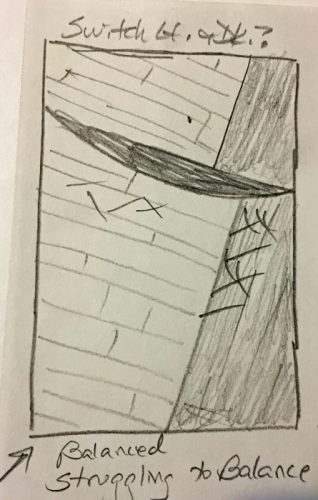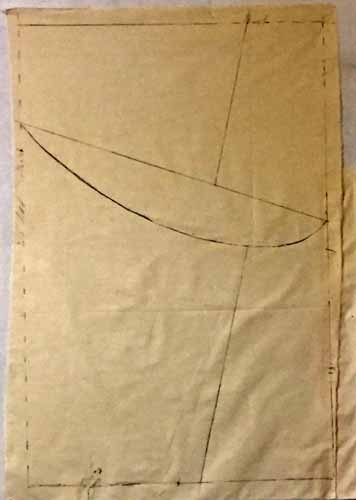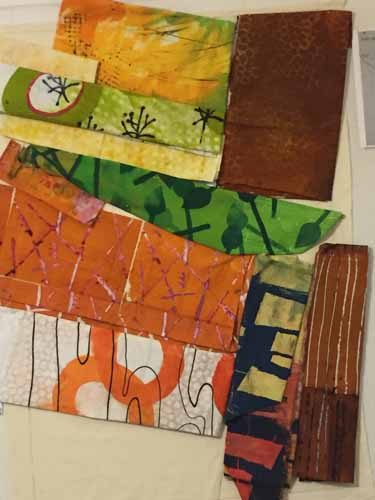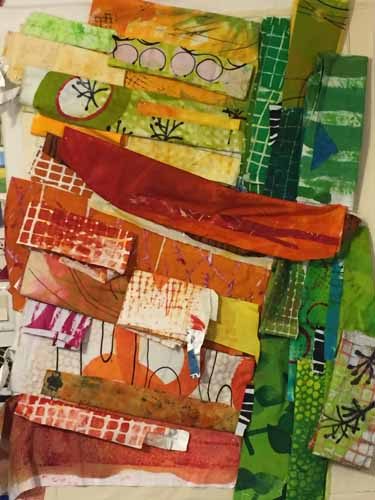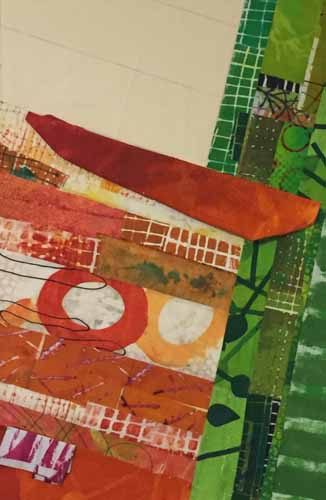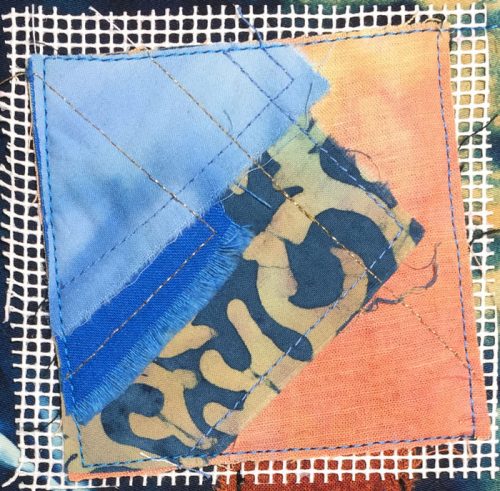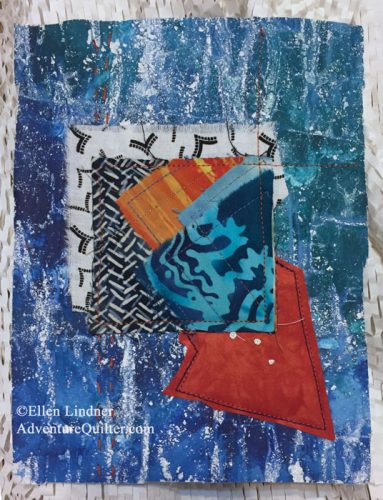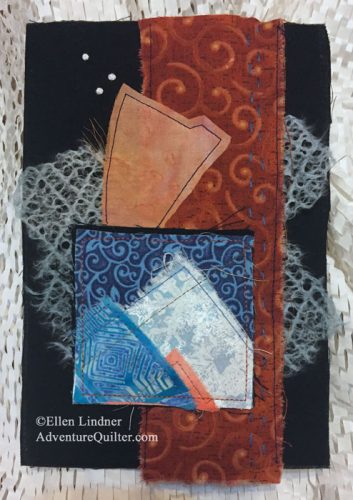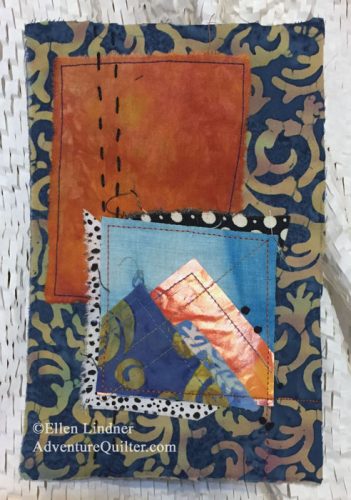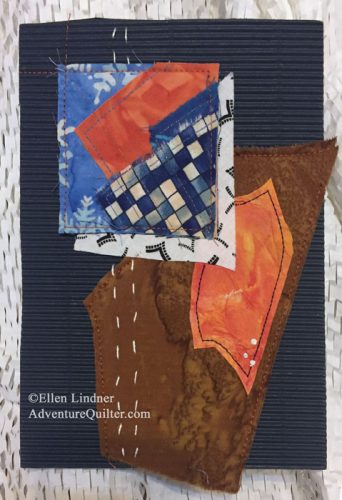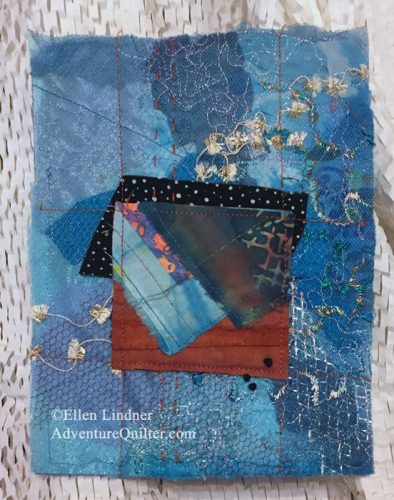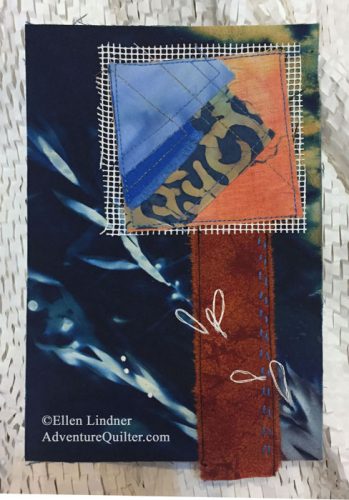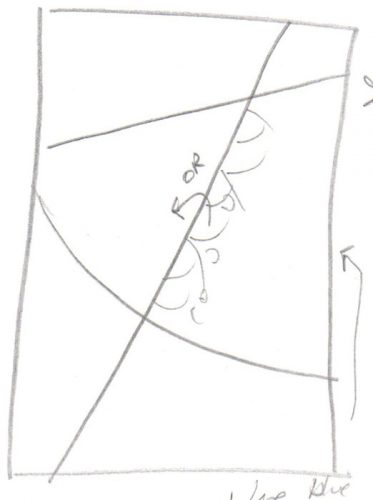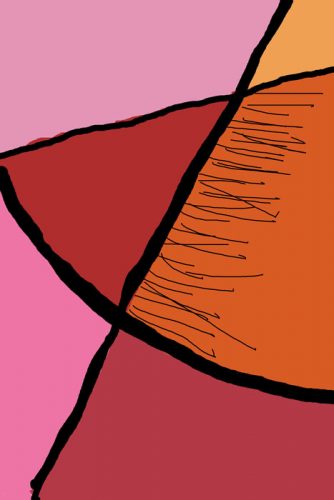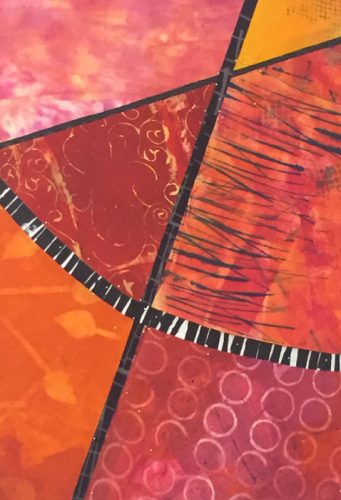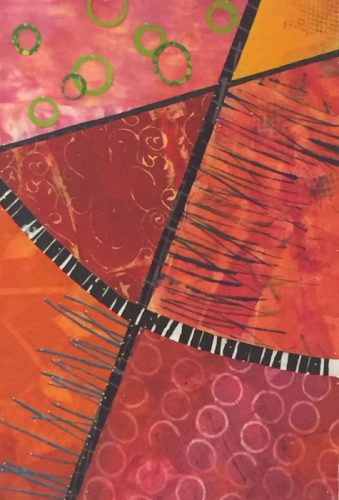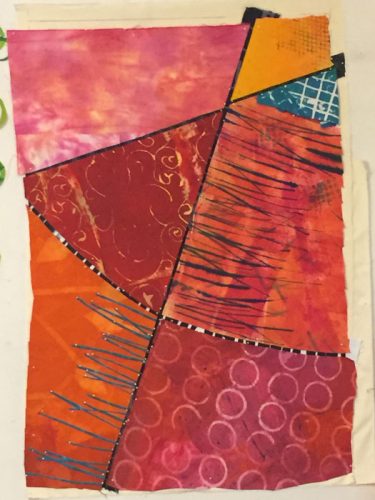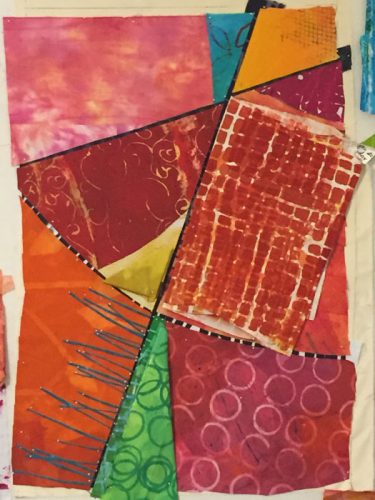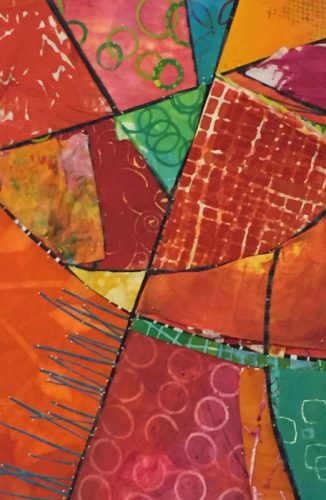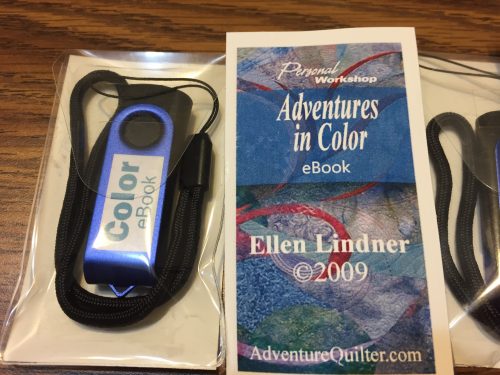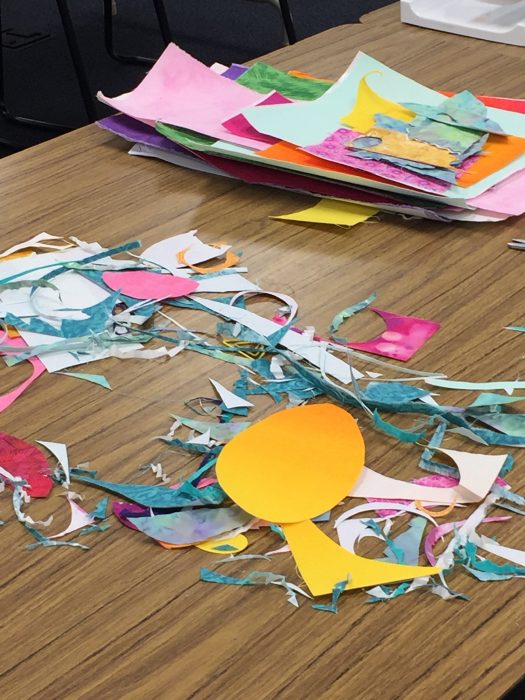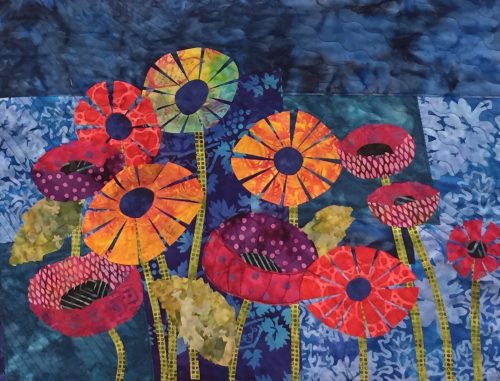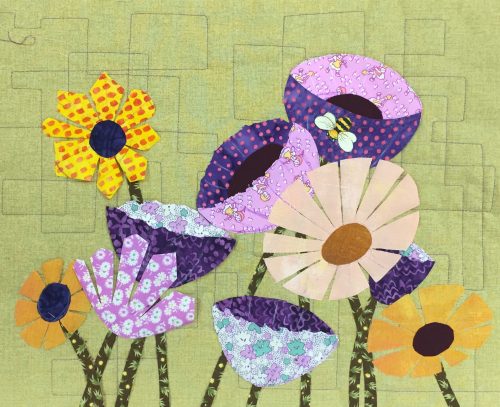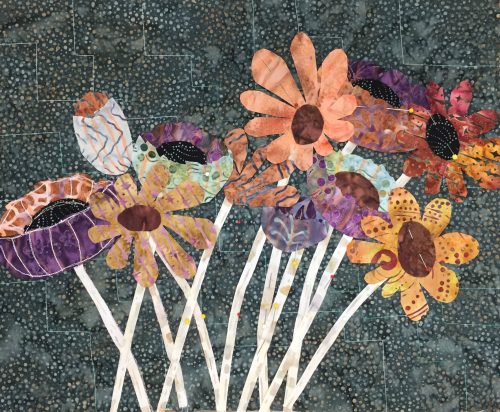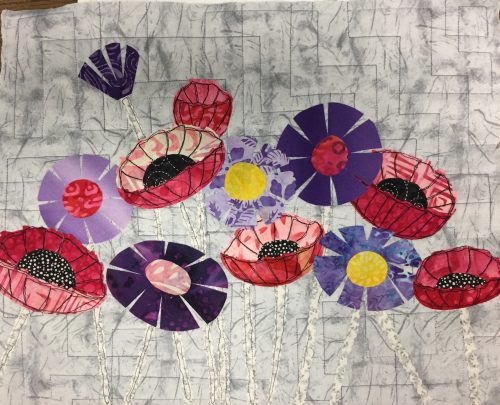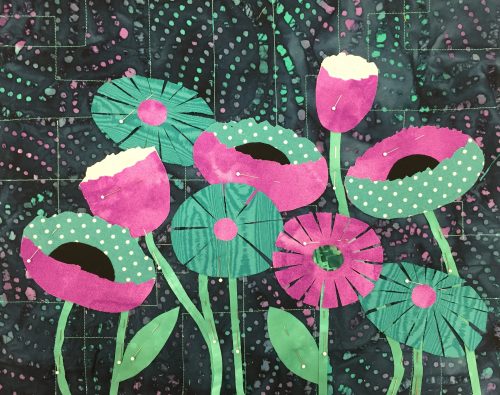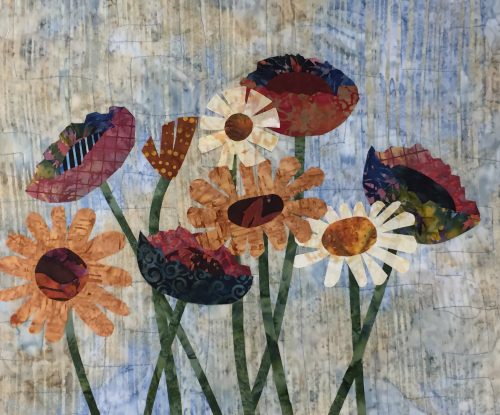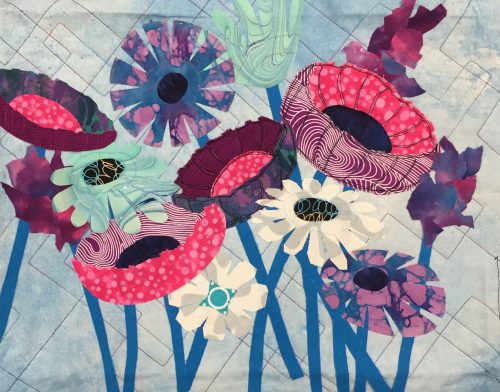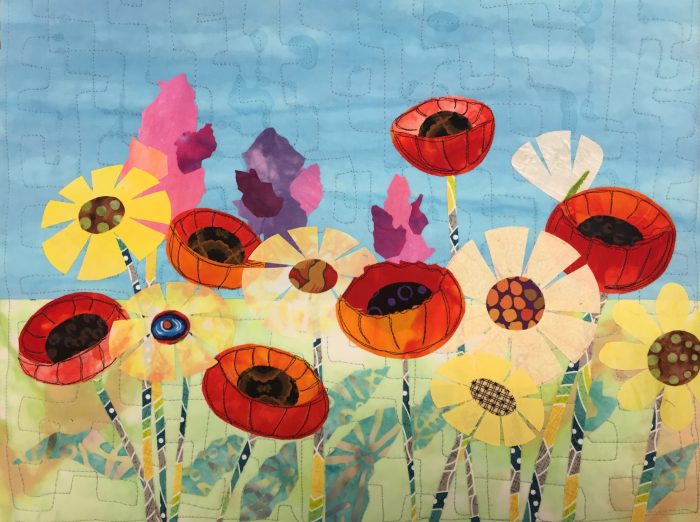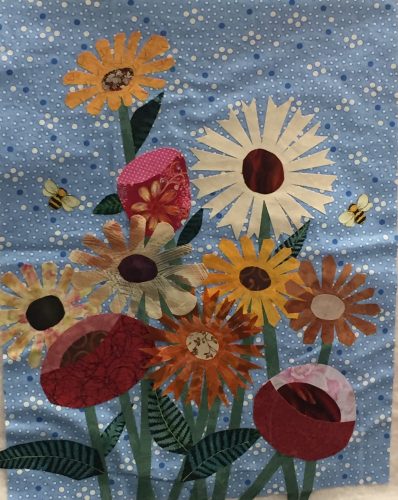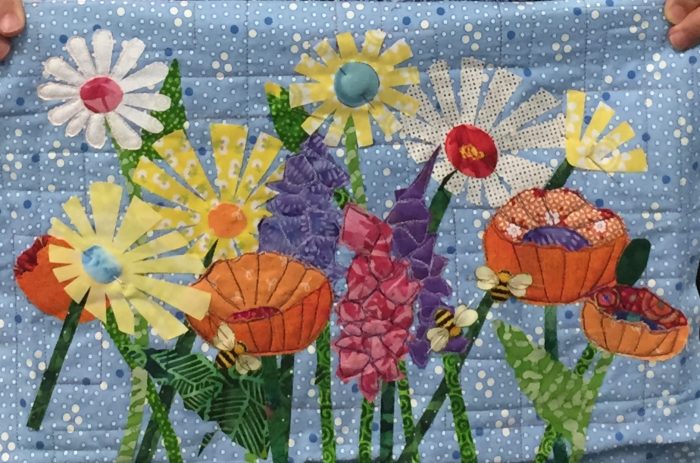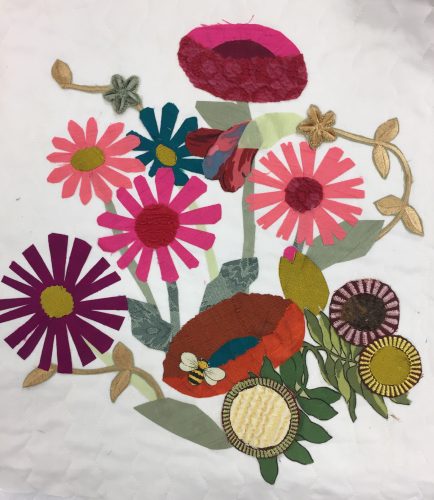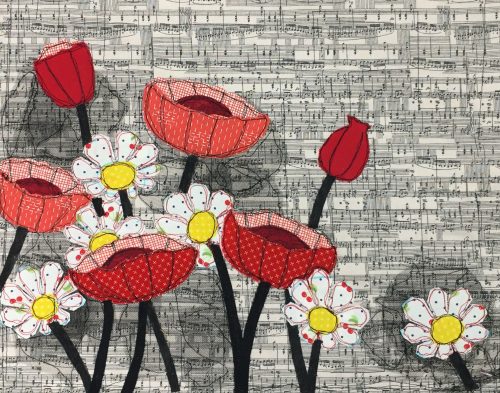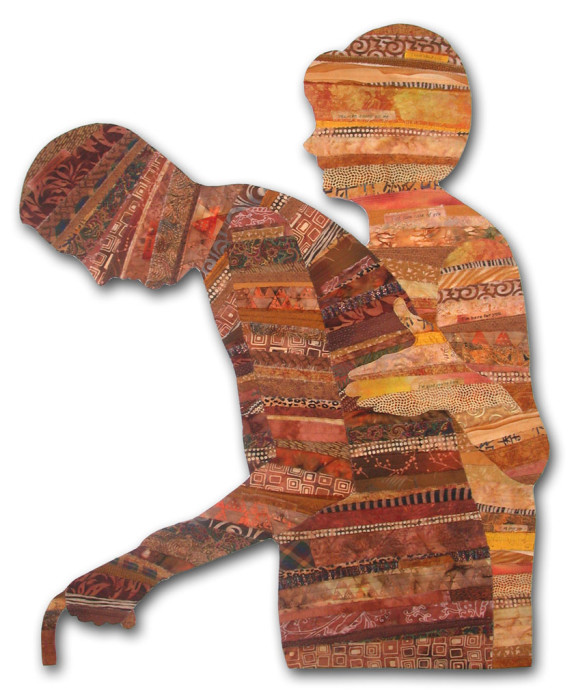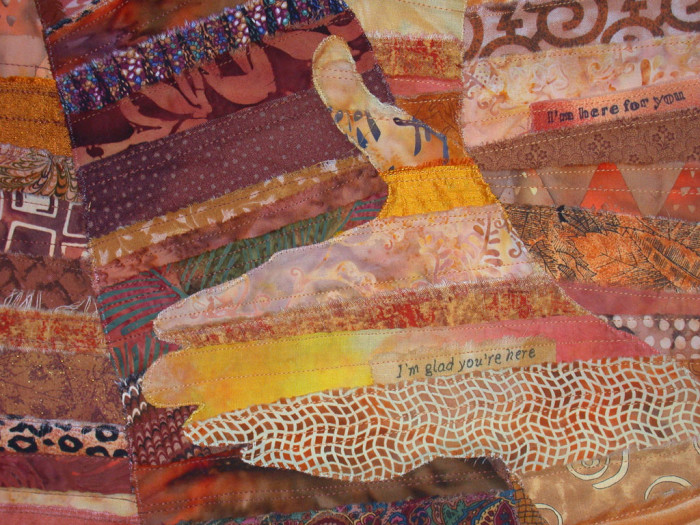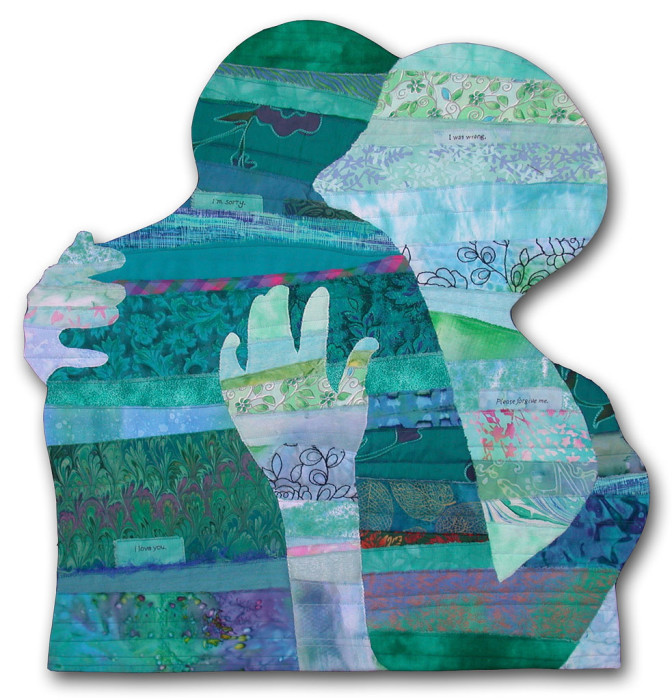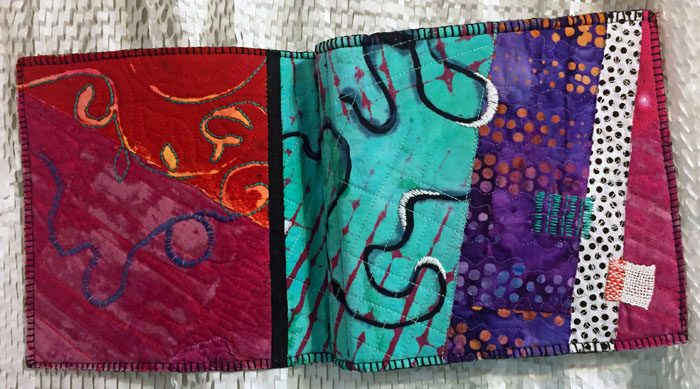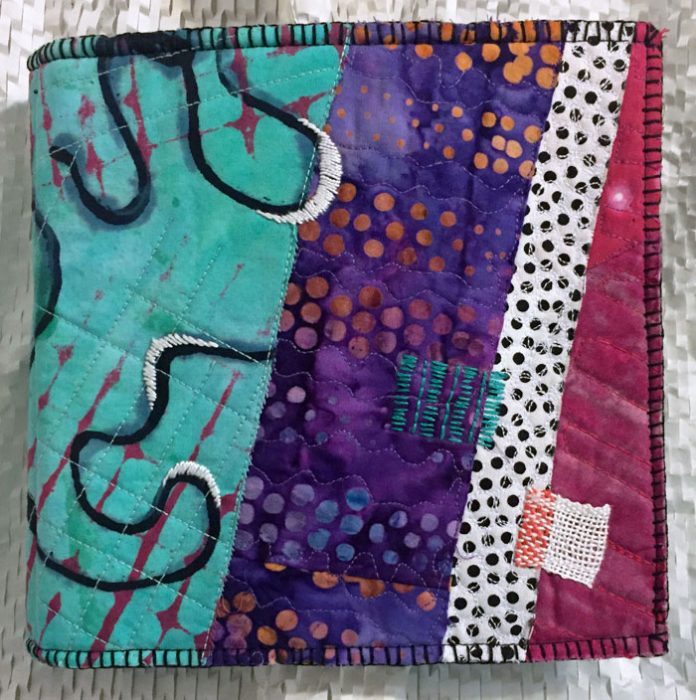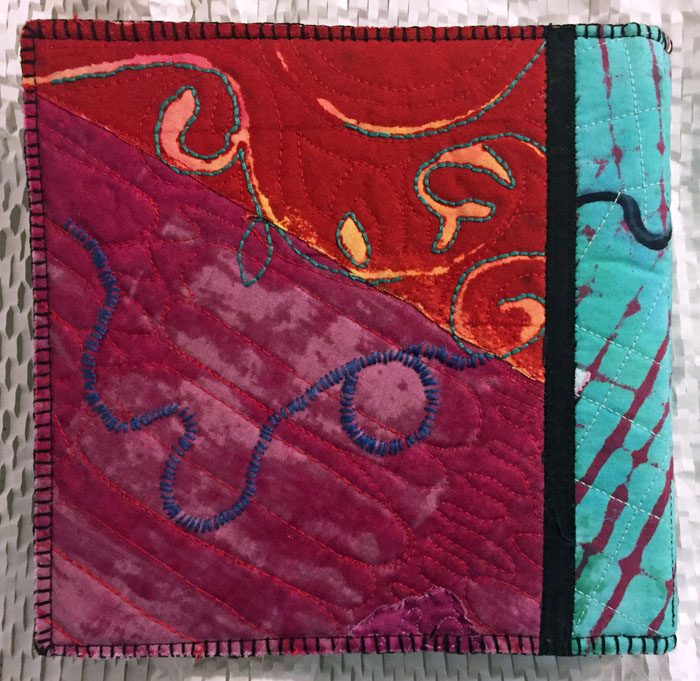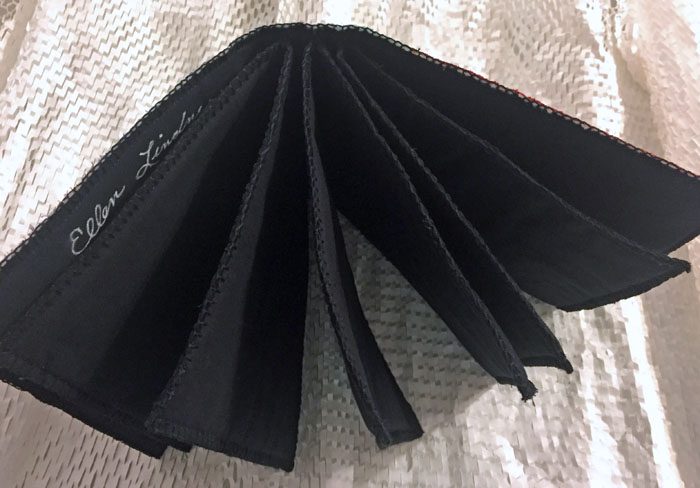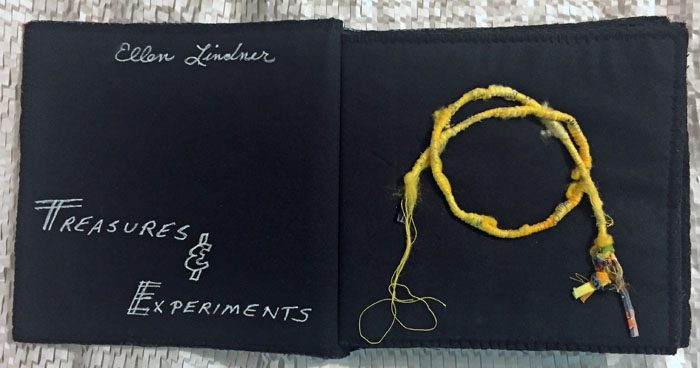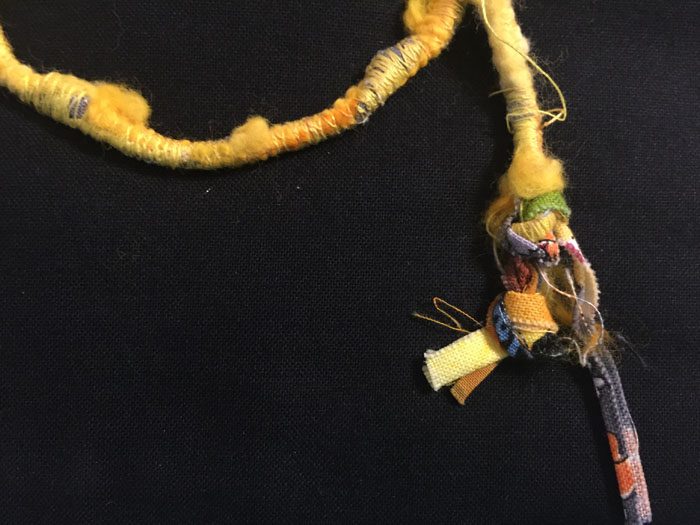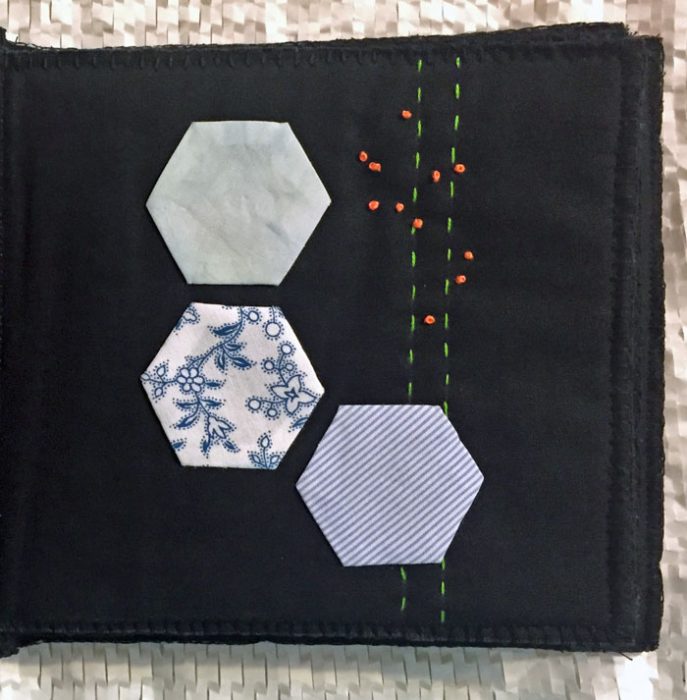I was really happy to visit the Houston International Quilt Festival this year. It was amazing! There were over 400 quilts on display, many of them stop-in-your-tracks gorgeous.
I used restraint with my photography, focusing on the ones demonstrating something new or other interesting characteristics.
First, I had to visit my own quilt, Jubilation. It was in the IQA judged show, A World of Beauty. It’s always nice to see your quilt in Houston! They do a great job with presentation.
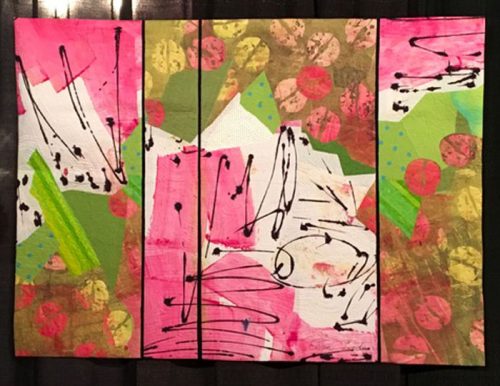
I checked out the two SAQA exhibits. My favorite was Layered and Stitched, which was a retrospective of the last 50 years in art quilting. It was very interesting to see what those first art quilts looked like, with solid polyester fabrics, large graphic designs much like today’s Modern quilts, and hand quilting. And, it was even more exciting to see quilts that I’ve admired in magazines and online hanging in front of me.
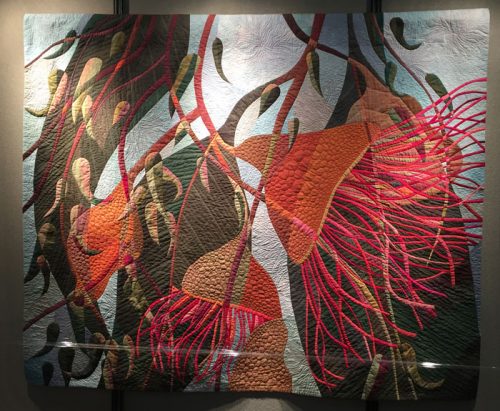
Although the lighting was uneven, this piece by Ruth de Vos was stunning. She calls it Not Even Solomon. Don’t you love those red floral tendrils floating around?
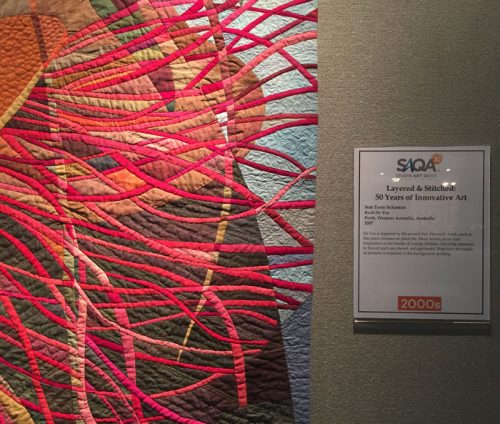
This quilt by Katie Pasquini Masopust, Spring Equinox was also in the exhibit.

As I approached it I thought it might have been made by Pat Pauly, who loves strong colors and highly patterned fabrics. But, when I got closer I could see that the fabrics were all solid. The pattern was made by small bits of fabric which had been added to create texture. I’m not sure I’d be patient enough for that!
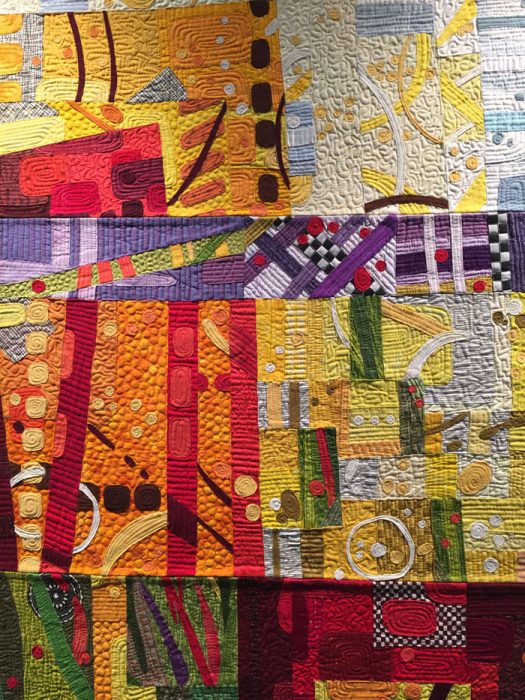
SAQA also had an exhibit in which the pieces were created with recycled materials. Most of them didn’t speak to me, but I did appreciate this one made by Libby Williamson. She calls it Clan of Misfits, and each gridded section starts with four used tea bags.
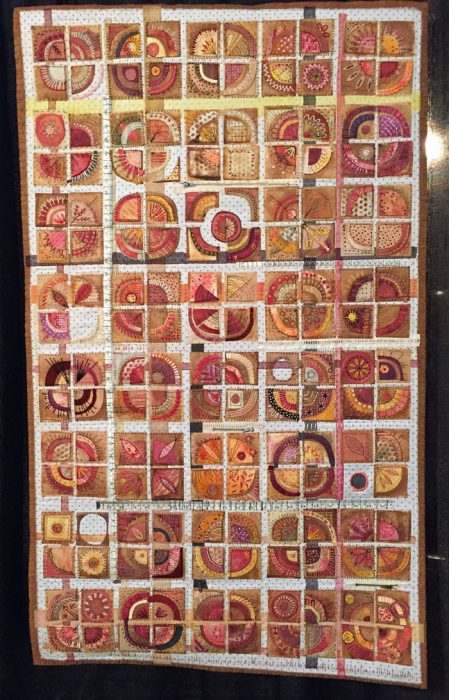
In addition to the tea bags, she has added fabric scraps and a lot of hand embroidery. Even some measuring tapes. I liked these details a lot.
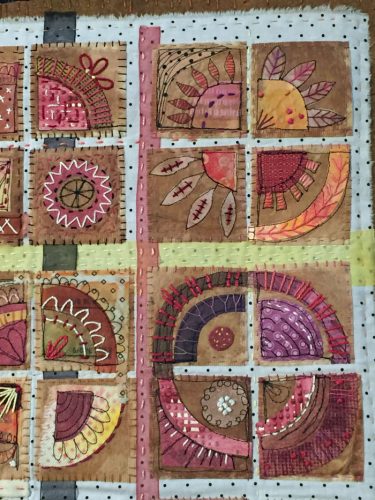
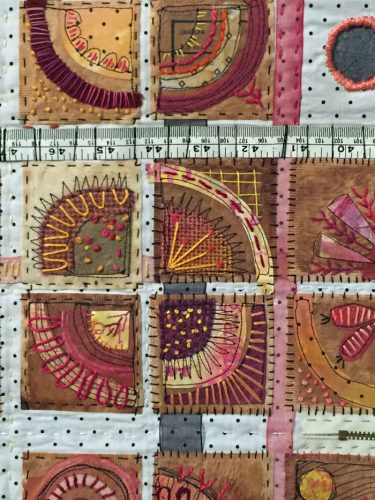
(I wouldn’t have the patience for all that hand stitching either.)
Terry Grant and Maria Shell both had solo exhibits in the “Rising Stars” special exhibit. Maria wasn’t there when I stopped by, but I got to meet Terry. (I’ve been following her work for decades.) She joked that she wasn’t sure how “rising” she was she’d already been at it for 30 years.
It was great to see her work in person. She has a distinctive style, which is very stylized and accented with thin dark lines. This was my favorite piece, called Camas Prairie Idaho.
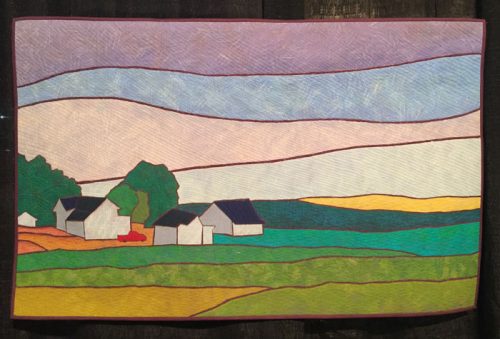
We talked a bit about those lines and she pointed out that they’re seldom actually black (although they often read that way.) Here they’re a dark plum color.
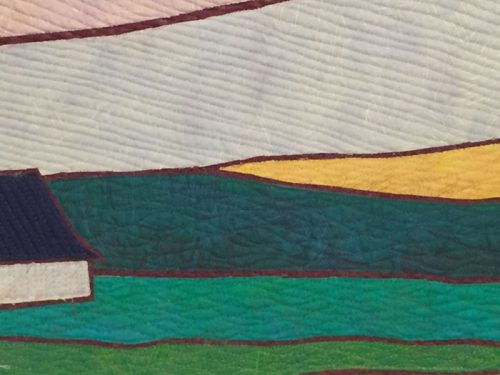
She also adjusts the line color throughout each piece as needed to create depth. This quilt, Rooftops Ecuador, is a good example. See how she used softer fabrics and line colors in the background? Lowering the contrast is very effective at making this section recede.
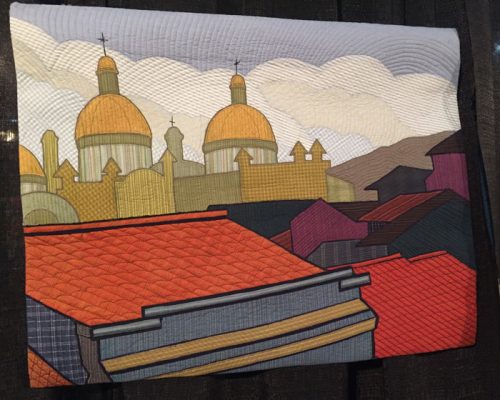
This fun piece by Natalia Lashko is called Being and Time.
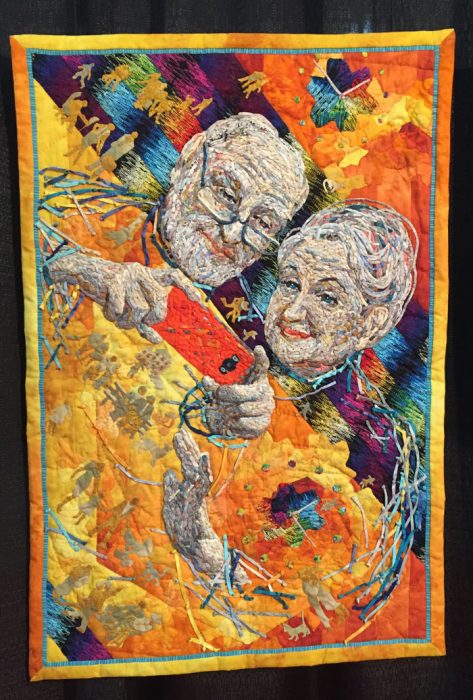
It had a LOT of texture in it. (Their faces and hands looked almost woven.) And I really liked the subtle images in the background. I imagine it to be photos and memories of people and events through the years.
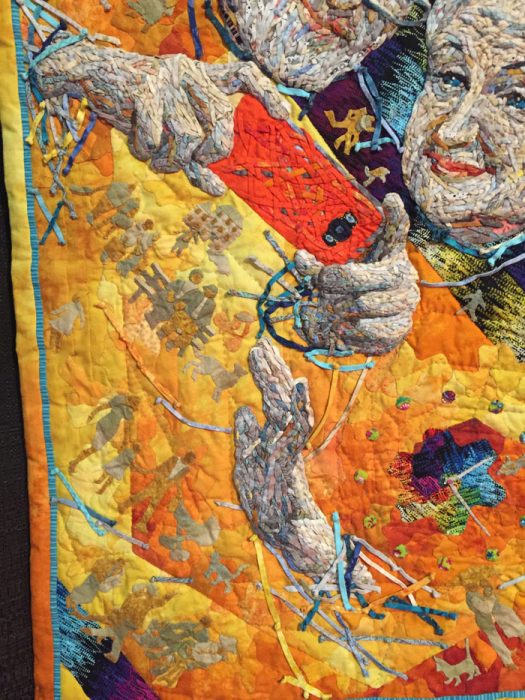
I have many more quilts to show you, so check back for the next blog post.
Ellen Lindner
